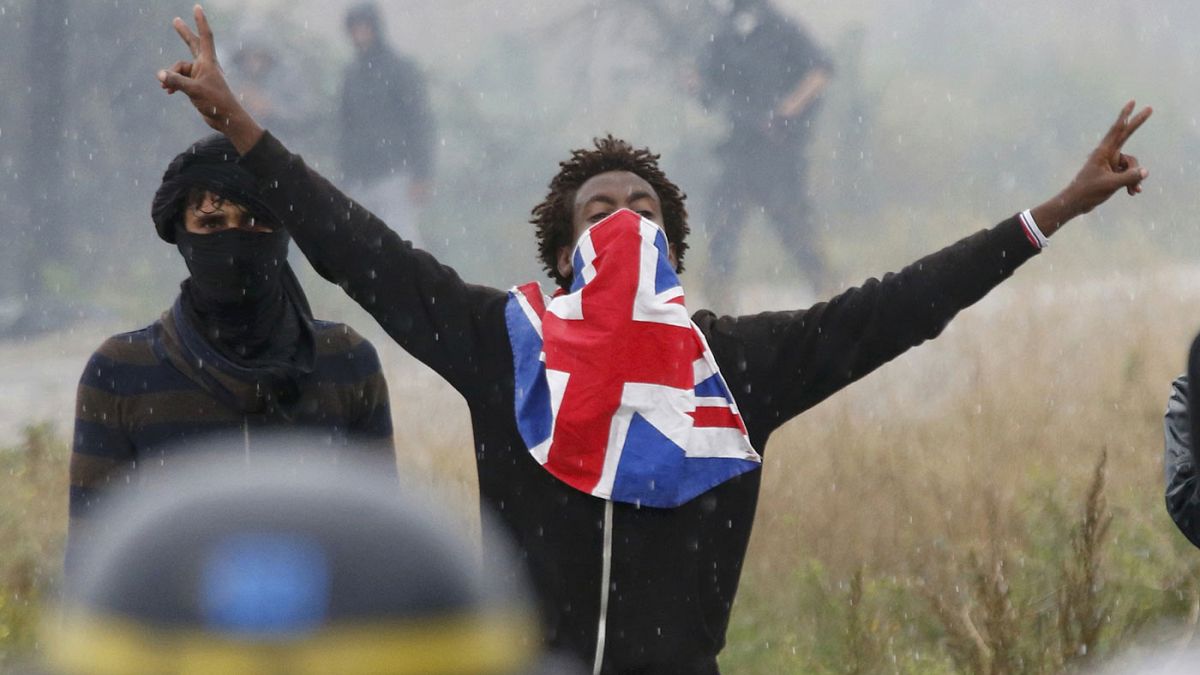With the so-called "jungle camp set for closure, and thousands of migrants soon to be once again displaced, euronews looks back at close to two decades of migrants in Calais.
Calais has long been a gathering point for migrants. A purgatory between two countries, both of which unwilling to accept them.
Since 1998, thousands of migrants seeking refugee status and dreaming of a better life in Britain have congregated at the Franco-British border in Northern France.
The plight and near constant influx of migrants to the areas surrounding the port of Calais has for years posed challenges both political and humanitarian to the French and British governments.
The Jungle in Calais from 2002 to 2016 via
karadaniellefox</a> <a href="https://t.co/yLNSSIhMzm">https://t.co/yLNSSIhMzm</a> <a href="https://t.co/7ScUBp4Iie">pic.twitter.com/7ScUBp4Iie</a></p>— Blathnaid Healy (blathnaidhealy) 24 October 2016
Sangatte – the first “jungle”
First there was Sangatte – a makeshift camp built by the French Red Cross to house the growing number of migrants in the Calais area.
Set up in the winter of 1999, a warehouse just half a mile from the Channel tunnel was initially intended to take in just 600 people.
By 2002, it was crammed with close to 2000 living in squalor.
Tensions soon rose, as migrants fought amongst themselves for spots close to the Channel Tunnel.
The then French minister for Home affairs Nicolas Sarkozy came under intense pressure from the United Kingdom to close the camp.
In exchange for the UK taking over three quarters of the migrants living at Sangatte, Sarkozy announced the final closure of the camp.
The end of the road
So why has Northern France become the gathering point for migrants trying to enter Britain?
The Touquet Treaty of 2003 between Britain and France stipulates that both countries are entitled to carry out immigration checks at each other’s sea ports.
France has a checkpoint at the English port of Dover, while the UK has one in Calais.
This has, in part, led to a build up of migrants in Northern France, with Britain unwilling to allow many to claim asylum across the English Channel.
Some argue that France is dealing with Britain’s problems, their evidence being the large number of so-called “jungle” camps that have sprung up around the Calais area since the closure of Sangatte.
“Dead end” Calais
In 2009, a camp containing close to 700 migrants was bulldozed by French authorities, only for the so-called New Jungle to spring up in its stead – a swathe of makeshift homes housing thousands of migrants.
It’s a day for goodbyes, as thousands of refugees + migrants leave the Calais ‘Jungle’ in France. Some have been there for years. pic.twitter.com/cKaa5jDvdt
— UN Refugee Agency (@Refugees) 24 October 2016
President Francois Hollande of France this year declared Calais a “dead end” for migrants, announcing the closure of the jungle encampment by the end of 2016.
“There will be no more passing through here” he said in September.
“I’m not sad to be leaving but we do not know where they will take us,” a young refugee from Darfur says on leaving #Jungle#Calaispic.twitter.com/WvJ2L8gSrm
— Stefan Simanowitz (@StefSimanowitz) 24 October 2016
The slow process to move the migrants has now begun, but after close to two decades of camps, few are confident that they have seen the last of Calais’ migrants.
